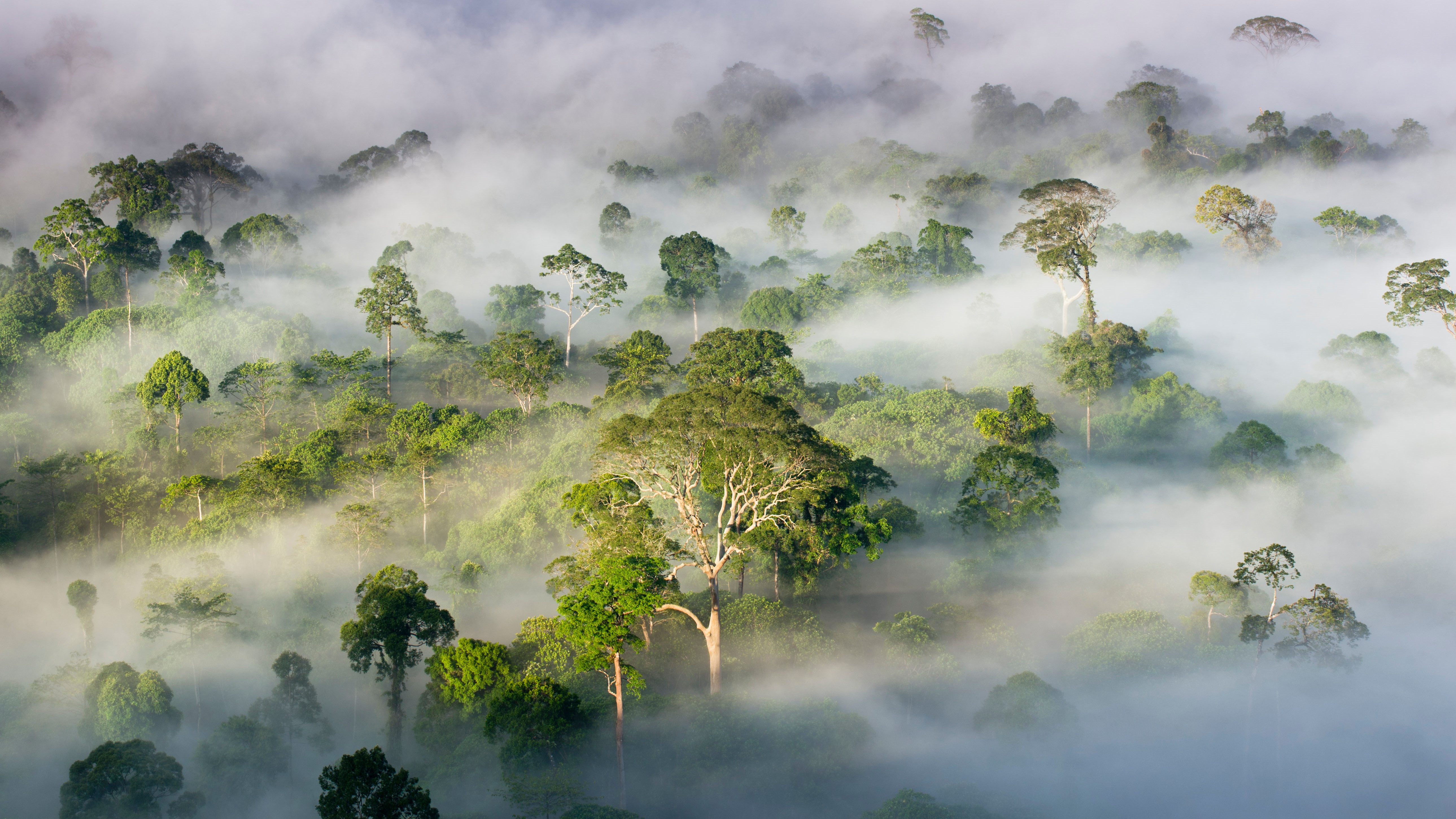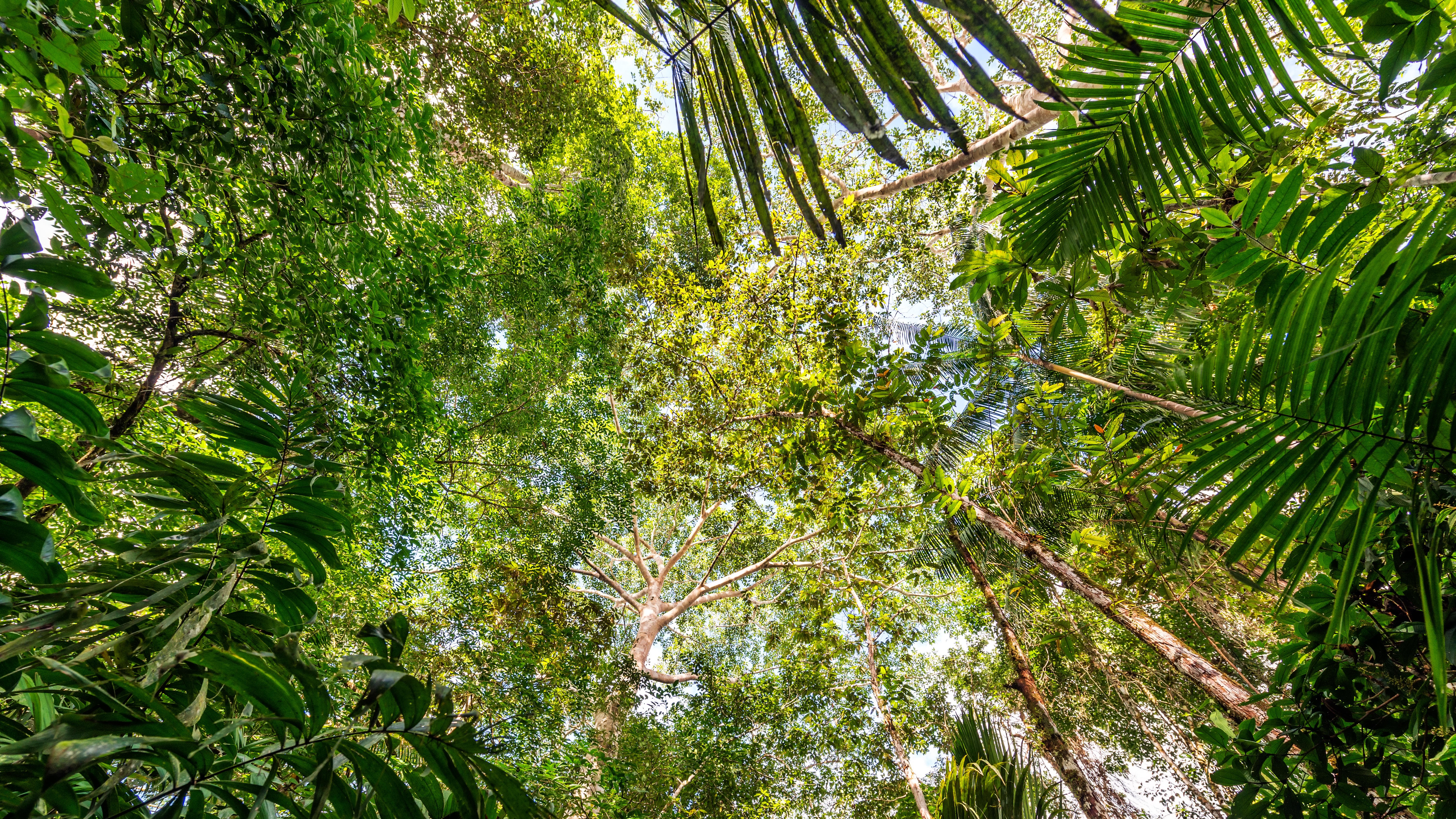
Climate change could be gradually making the world's tropical rainforests too hot for photosynthesis to occur, and it may eventually trigger their collapse, a new study has warned.
Using data collected from the International Space Station (ISS), scientists found that a small yet growing percentage of tree leaves in tropical forests are approaching the maximum temperature threshold for leaves to photosynthesize.
The average critical temperature beyond which photosynthetic machinery in tropical trees begins to fail is 116 degrees Fahrenheit (46.7 degrees Celsius). Currently, only 0.01 % of all leaves surpass this critical temperature every year. But scientists warn that air temperature rises of 7.2 F (4 C) could push trees in tropical forests beyond a tipping point and into mass death.
Related: Amazon nears 'tipping point' where rainforest could transform into savanna
If this were to happen, it would spell disaster for Earth's climate systems and biodiversity, researchers report in a study published Wednesday (Aug. 23) in the journal Nature.
"It's concerning from our perspective that you see nonlinear trends. So you heat the air by, let's say, 2, 3 degrees Celsius [3.6 to 5.4 F], and the actual upper temperature of these leaves goes up by 8 degrees [Celsius; 14.4 F]," Christopher Doughty, an associate professor of ecoinformatics at Northern Arizona University, said during a press conference on Monday (Aug. 21). "Even though a small percentage of leaves are currently doing this, our best guess is that a 4 degrees Celsius increase in temperature could cause some serious issues for certain tropical forests."
How to take a rainforest's temperature
Tropical rainforests are vital regions for our planet. They encompass 3 billion acres (1.2 billion hectares), or around 6%, of Earth's surface area, and are home to half of the world's animal and plant species. They are also vital stores of the world's fresh water — with the Amazon Basin alone storing one-fifth. Photosynthesis in rainforests produces 32% of the planet's oxygen and helps stabilize global climates by sucking billions of tons of carbon dioxide from the atmosphere each year.

To build up a picture of the temperatures in the world's tropical forests, the researchers turned to the Ecosystem Spaceborne Thermal Radiometer Experiment on Space Station (ECOSTRESS) sensor on the ISS.
The scientists combined ECOSTRESS temperature readings from 2018 to 2020 with thousands of ground measurements made from infrared-sensing pyrgeometers in rainforests across South America, Central Africa and Southeast Asia.
Aggregating these results revealed that canopy temperatures peaked at around 93.2 F (34 C) on average, and a small proportion exceeded 104 F (40 C). Moreover, every season, 0.01% of leaves exceeded a critical temperature beyond which their photosynthesis is likely to shut down, resulting in their deaths.
This number may sound inconsequential, but the researchers noted it could increase rapidly. "While the number is small it has large implications — it's not going to go 0.01 to 0.02. It's going to jump nonlinearly, it's going to increase potentially much faster," Joshua B. Fisher, an associate professor of environmental science at Chapman University in California said at the press conference.
By performing laboratory leaf experiments at 3.6, 5.4 and 7.2 F (2, 3 and 4 C) of warming, the researchers found that temperatures around some of the leaves peaked much higher than the air temperature — by up to 14.4 F (8 C).
Plugging these peak temperatures into a mathematical model, the scientists found that an average 7 F (3.9 C) increase in the air temperature surrounding the leaves caused those most exposed to the heat to have their water-carrying stomata closed off by the tree, leading to their deaths. This triggered a cascade effect, increasing the temperature around the remaining leaves and potentially killing them, their branches and the trees in turn.
"If you have 10% of the leaves dying, the whole branch is going to be warmer because a critical part of that branch can no longer cool the broader branch. Likewise you can make that assumption across the whole forest when a tree dies," Doughty said.
Yet in spite of their findings, the scientists are optimistic that humanity has enough time to curb emissions and avoid potential tipping points in tropical forests.
"This is a glimpse into a potential tipping point. It is not saying that the tropical forests are now going to be savannas tomorrow," Fisher said. "If you think about human health, you want to know if you're sick or have cancer so you can deal with it before it takes over."







